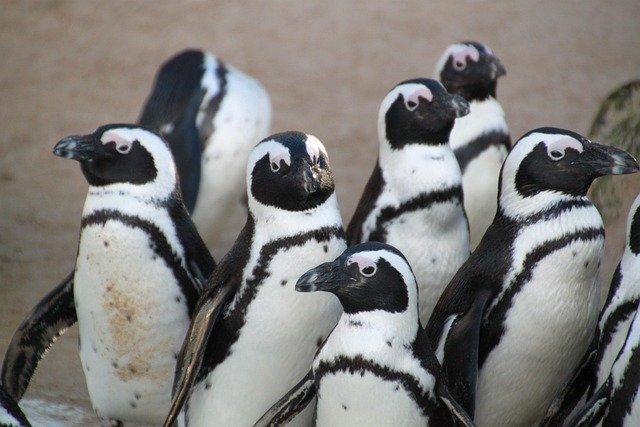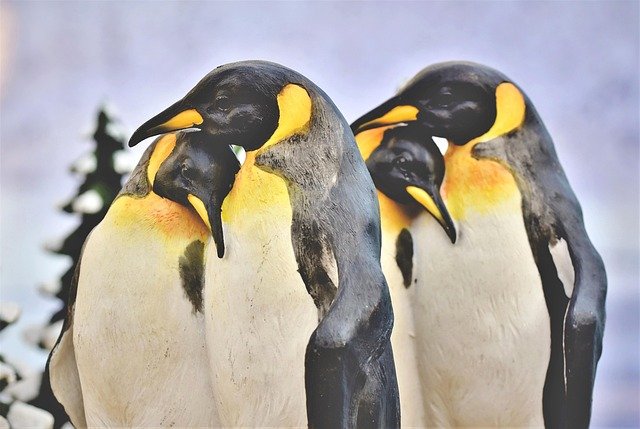
The Remarkable Adaptations of Penguins: Surviving in Extreme Environments
Penguins are some of the most fascinating birds on the planet, known for their unique adaptations that allow them to thrive in some of the harshest environments on Earth. Found primarily in the Southern Hemisphere, especially in Antarctica, these flightless birds have evolved a range of physical and behavioral traits that enable them to survive and thrive in extreme cold and icy conditions. Let's explore some of these remarkable adaptations.
1. Insulating Feathers
One of the most critical adaptations of penguins is their specialized feathers. Penguins have a layer of dense, waterproof feathers that provide insulation against the frigid temperatures of their habitats.
- Waterproofing: The outer layer of feathers is coated with a natural oil produced by a gland near their tails, preventing water from penetrating and ensuring they stay dry while swimming.
- Down Feathers: Beneath the outer layer, penguins have a thick layer of down feathers that trap air and provide additional insulation, keeping them warm even in sub-zero temperatures.
2. Streamlined Bodies
Penguins are built for life in the water, with their bodies adapted for efficient swimming.
- Streamlined Shape: Their torpedo-shaped bodies reduce drag as they swim, allowing them to reach speeds of up to 15 miles per hour (24 km/h).
- Flipper-like Wings: Instead of traditional wings, penguins have evolved flippers that are perfect for propelling themselves through water, making them agile hunters of fish and other marine life.
3. Social Behavior and Huddling
Surviving in extreme cold requires teamwork. Penguins are highly social animals, and their social behavior plays a crucial role in their survival.
- Huddling: During harsh winter storms, penguins huddle together in groups to conserve heat. This behavior significantly reduces the amount of energy each individual expends to stay warm.
- Communication: Penguins have developed a variety of vocalizations and body language to communicate with one another, which is essential for maintaining social bonds and coordinating group activities.
4. Efficient Foraging Techniques
Penguins have adapted their foraging strategies to maximize their hunting success in icy waters.
- Diving Ability: They are excellent divers, capable of reaching depths of over 1,800 feet (550 meters) in search of food. Their bodies are designed to withstand the pressure of deep dives.
- Vision Underwater: Penguins have excellent underwater vision, allowing them to spot prey such as fish, squid, and krill even in murky waters.
5. Breeding and Parental Care
Penguins have unique reproductive strategies that ensure the survival of their young in extreme environments.
- Egg Incubation: Many species, like the Emperor Penguin, engage in a remarkable breeding behavior where males incubate the eggs on their feet, providing warmth and protection from the cold.
- Shared Parenting: Both parents take turns caring for the chicks, ensuring they receive adequate warmth and food during the critical early stages of life.
Conclusion
Penguins are a testament to the incredible power of evolution and adaptation. Their unique physical features, social behaviors, and breeding strategies enable them to thrive in one of the most extreme environments on Earth. As climate change continues to impact their habitats, understanding these remarkable adaptations becomes increasingly important for their conservation. By studying and protecting these incredible birds, we can ensure that they continue to grace our planet for generations to come.
Feel free to share your thoughts or ask questions about these amazing creatures in the comments below! 🐧

Upvoted! Thank you for supporting witness @jswit.
Downvoting a post can decrease pending rewards and make it less visible. Common reasons:
Submit
Downvoting a post can decrease pending rewards and make it less visible. Common reasons:
Submit